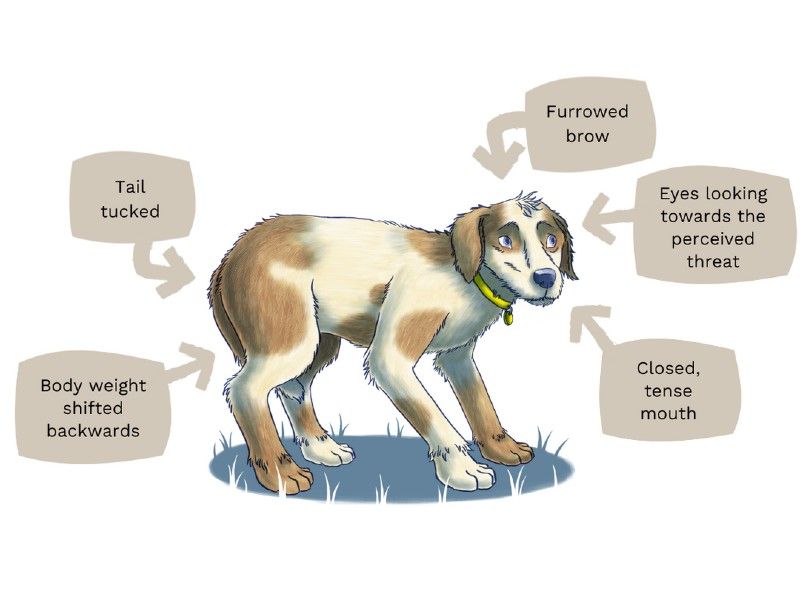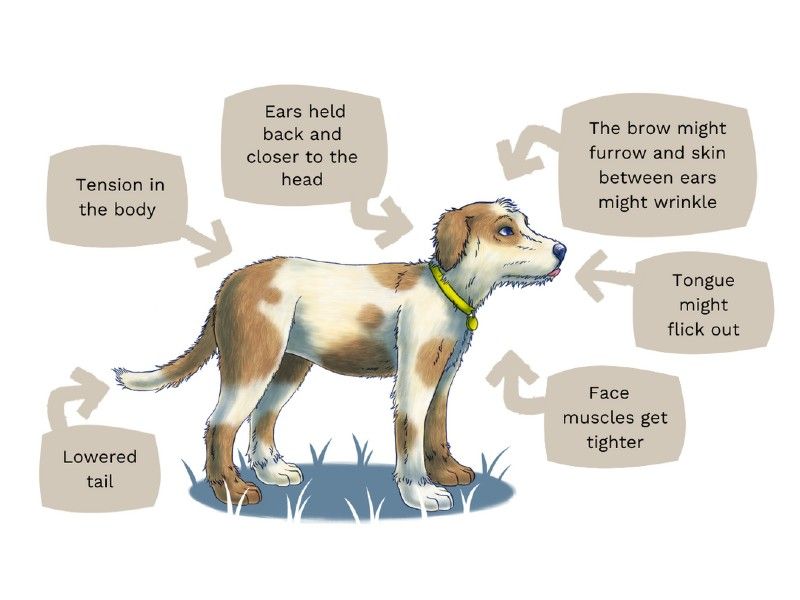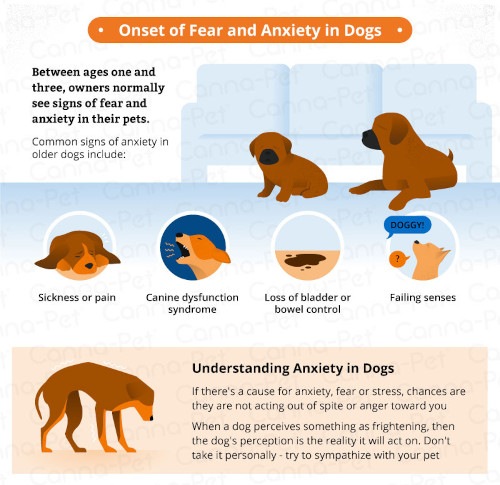Welcome to an informative guide on recognizing and treating canine anxiety disorders. As a responsible pet owner, it’s important to be aware of the signs of anxiety in your furry friend and how to effectively help them cope with their stress. From understanding common triggers to exploring various treatment options, this article will provide you with the knowledge and resources needed to support your beloved dog through their struggles with anxiety. Have you ever noticed changes in your dog’s behavior that you suspect might be related to anxiety? Dogs, just like humans, can suffer from anxiety disorders that can greatly impact their well-being. In this article, we will discuss how to recognize the signs of canine anxiety disorders and explore effective treatment options to help your furry friend feel more at ease. So, let’s dive in and learn more about this important topic!

This image is property of www.dogstrust.org.uk.
Understanding Canine Anxiety Disorders
Just like humans, dogs can experience different types of anxiety disorders that may manifest in various ways. It’s essential to understand the common types of canine anxiety disorders to recognize the signs and symptoms in your furry friend. By gaining insight into these disorders, you can better support your dog and provide appropriate care.
Types of Canine Anxiety Disorders
There are several types of anxiety disorders that can affect dogs, including separation anxiety, noise phobias, and social anxiety. Each type of anxiety disorder may present differently in dogs and require specific interventions for management. By recognizing the different types of canine anxiety disorders, you can tailor your approach to best support your dog’s needs.
Recognizing Signs of Canine Anxiety Disorders
Recognizing the signs and symptoms of canine anxiety disorders is crucial for early intervention and effective treatment. Dogs may exhibit various behavioral changes when experiencing anxiety, which can manifest in different ways depending on the type of anxiety disorder. By paying attention to your dog’s behavior and understanding the common signs of anxiety, you can provide timely support to help alleviate their distress.
Common Signs of Canine Anxiety
- Excessive barking or whining
- Pacing or restlessness
- Destructive behavior (e.g., chewing furniture or shoes)
- Panting or trembling
- Avoidance of certain situations or people
- Aggression or fearfulness
- Excessive drooling
- Changes in appetite or sleep patterns
If you notice any of these signs in your dog, it’s essential to consider the possibility of an anxiety disorder and seek guidance from a veterinarian or animal behaviorist for a proper diagnosis.
Observing Triggering Factors
Certain situations or stimuli can trigger anxiety in dogs and exacerbate their symptoms. By observing your dog’s behavior in specific contexts, you can identify potential triggering factors that may contribute to their anxiety. Common triggers for canine anxiety disorders include loud noises (e.g., thunderstorms or fireworks), being left alone, unfamiliar environments, or interactions with unfamiliar animals or people. Understanding these triggering factors can help you create a safe and comfortable environment for your dog and prevent situations that may induce anxiety.

This image is property of www.dogstrust.org.uk.
Seeking Professional Guidance
If you suspect that your dog is suffering from an anxiety disorder, it’s essential to seek professional guidance from a veterinarian or certified animal behaviorist. These professionals can assess your dog’s behavior, provide a proper diagnosis, and recommend appropriate treatment options to help alleviate their anxiety. Veterinary behaviorists are specially trained to address behavioral issues in animals and develop tailored treatment plans to meet your dog’s specific needs.
The Importance of a Proper Diagnosis
A proper diagnosis is crucial for effectively treating canine anxiety disorders. Veterinarians and animal behaviorists can conduct behavior assessments and evaluate your dog’s overall health to determine the underlying cause of their anxiety. By obtaining a proper diagnosis, you can ensure that your dog receives the most appropriate treatment and support to overcome their anxiety and improve their quality of life.
Treatment Options for Canine Anxiety Disorders
Once a diagnosis is made, veterinarians and animal behaviorists may recommend a combination of behavior modification techniques, environmental modifications, and medication to help manage your dog’s anxiety disorder. Treatment options may vary depending on the type and severity of the anxiety disorder, as well as your dog’s individual needs and preferences. It’s essential to work closely with your veterinarian or animal behaviorist to develop a comprehensive treatment plan that addresses your dog’s specific anxiety symptoms.
Behavior Modification Techniques
Behavior modification techniques are an essential component of treating canine anxiety disorders. These techniques involve modifying your dog’s behavior through positive reinforcement, desensitization, and counterconditioning to help them cope with their anxiety triggers. Common behavior modification strategies for canine anxiety disorders include training exercises, relaxation techniques, and creating a calm and structured environment for your dog. By implementing behavior modification techniques consistently and patiently, you can help your dog learn more adaptive coping mechanisms for managing their anxiety.
Environmental Modifications
Creating a safe and supportive environment for your dog is essential for managing their anxiety disorder. Environmental modifications can help reduce your dog’s exposure to triggering factors and provide them with a sense of security and comfort. Simple changes, such as creating a designated safe space for your dog, using calming pheromone diffusers, or playing soothing music, can help alleviate your dog’s anxiety and promote relaxation. By making adjustments to your dog’s living environment and daily routine, you can help them feel more secure and at ease.
Medication
In some cases, veterinarians may prescribe medication to help manage severe cases of canine anxiety disorders. Medications such as selective serotonin reuptake inhibitors (SSRIs), tricyclic antidepressants, or benzodiazepines may be used to alleviate your dog’s anxiety symptoms and improve their overall well-being. It’s essential to follow your veterinarian’s guidance carefully when administering medication to your dog and monitor any side effects or changes in behavior closely. Medication should be used in conjunction with behavior modification techniques and environmental modifications to achieve the best outcomes for your dog.

This image is property of blog.wagglemail.com.
Providing Support and Understanding
Supporting a dog with an anxiety disorder requires patience, compassion, and understanding. It’s crucial to provide your dog with a safe and nurturing environment, positive reinforcement, and emotional support as they navigate their anxiety. By being observant, responsive, and attentive to your dog’s needs, you can help them feel more secure and confident in managing their anxiety. Remember that each dog is unique, and the journey to overcoming anxiety may require time, effort, and dedication on your part.
Building Trust and Bonding
Building trust and bonding with your dog is essential for helping them feel secure and supported in managing their anxiety disorder. Positive interactions, regular exercise, mental stimulation, and quality time spent together can strengthen your bond with your dog and enhance their overall well-being. By establishing a strong connection based on trust and understanding, you can provide a solid foundation for your dog to overcome their anxiety and thrive.
Creating a Calm and Structured Routine
Establishing a calm and structured routine can help your dog feel more secure and reduce their anxiety. Dogs thrive on predictability and consistency, so creating a daily schedule with designated feeding times, exercise routines, playtime, and quiet periods can help your dog feel more at ease. By providing a structured routine that meets your dog’s physical and emotional needs, you can help them feel more grounded and less anxious in their daily life.

This image is property of www.dogstrust.org.uk.
Conclusion
Recognizing and treating canine anxiety disorders is essential for promoting your dog’s mental and emotional well-being. By understanding the common types of anxiety disorders, recognizing the signs and symptoms, seeking professional guidance, and providing appropriate support, you can help your dog overcome their anxiety and lead a happier and healthier life. Remember that every dog is unique, and the best approach to managing anxiety may vary depending on your dog’s individual needs and preferences. With patience, love, and dedication, you can make a positive difference in your dog’s life and help them thrive despite their anxiety challenges.

This image is property of www.zimmvet.com.

